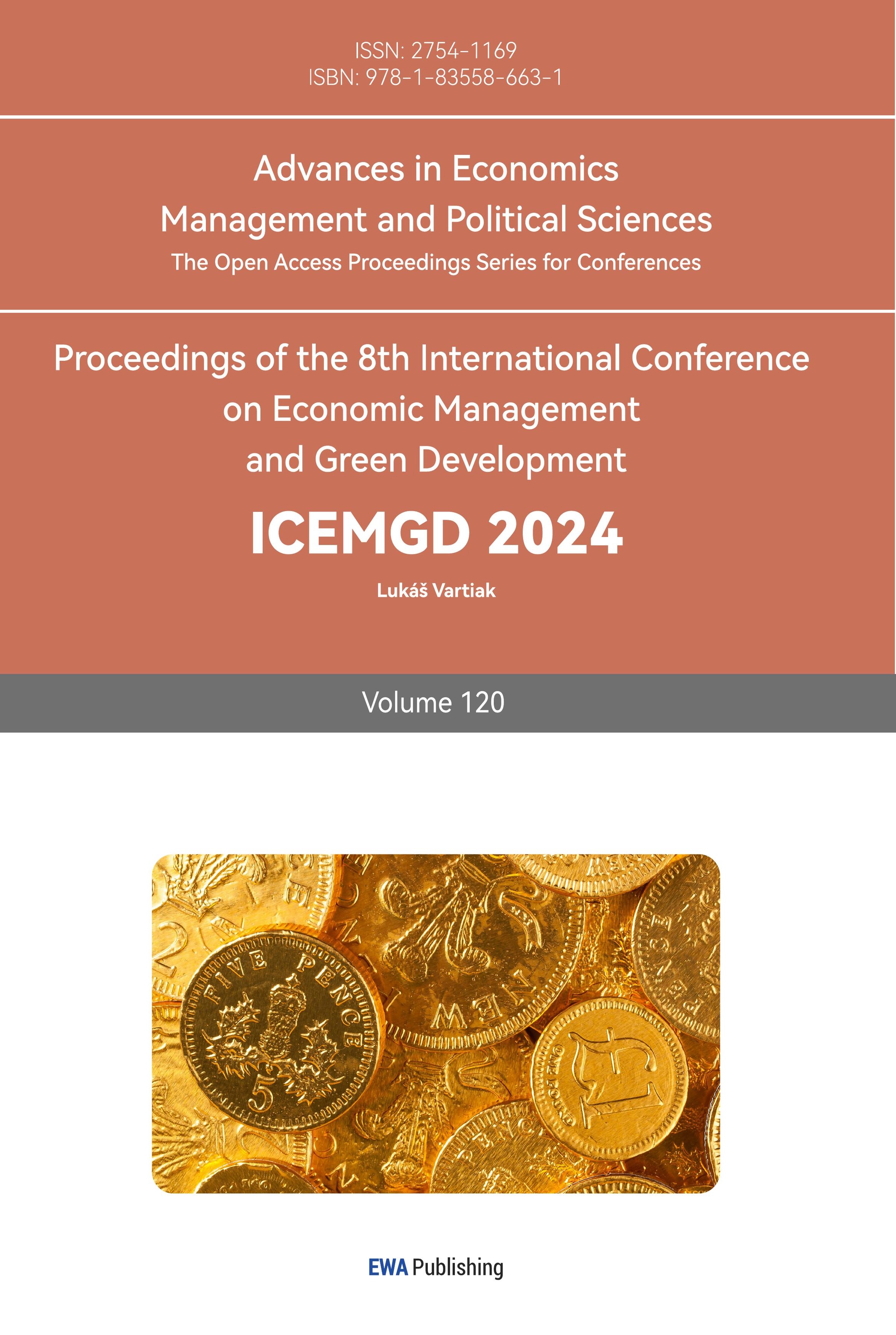1. Introduction
Characteristic towns are defined by their unique industry orientations, cultural identities, tourism attractiveness, and community functions [1]. They often leverage these distinctive features as competitive advantages to draw in a targeted consumer base, helping foster the local economy. This essay is going to examine the reasons and operational patterns of characteristic towns that focus primarily on tourism. It includes an in-depth case study of Yangzhou, a town in China that is well-known for its rich tourism tradition. Additionally, the analysis will draw on a comparative study of Xi'an and the contemporary tourism scene in Yangzhou, supplemented by data from a survey investigating the impact of tourism on the residents’ everyday lives. Finally, relevant recommendations will be presented.
2. Literature Review
2.1. Positive impacts of characteristic towns
2.1.1. Promote the development and innovation of regional industries
Once deciding to develop a characteristic town, the first step, naturally, is to select a specialty industry. This unique industry ensures that the town has a competitive advantage over other traditional towns and, to some extent, effectively avoids homogenized competition [2]. Sequentially, with support from different sources, dominant industries in characteristic towns can capture new opportunities to realize new upgrading and innovation. For instance, instead of developing traditional characteristic tourism towns, Jiangsu Province focuses on emerging industries, such as high-end manufacturing, creative entrepreneurship, and information technology [3].
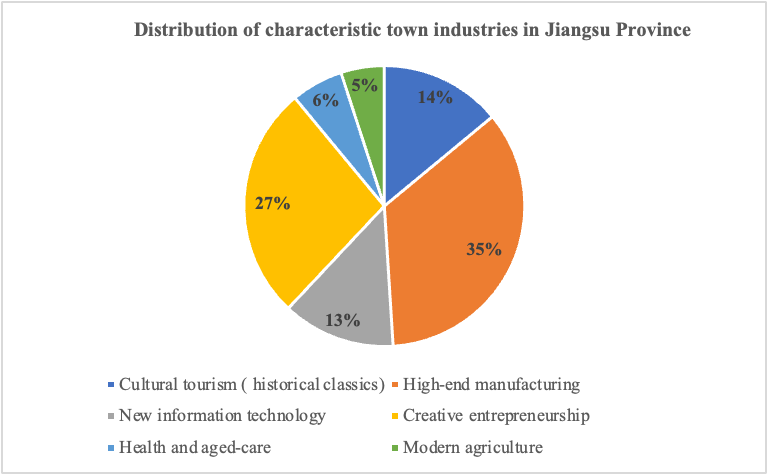
Figure 1: Distribution of characteristic town industries in Jiangsu Province.
Additionally, cultural elements are imperative among all the elements in a characteristic town. Thus, cultural elements have been utilized in recent years to inspire innovation, invigorate traditional industries, and facilitate a more comprehensive industrial chain [4]. According to research conducted by Cushman & Wakefield , Chengdu OCT Anren Ancient Town has created an integrated industrial chain through a wise industrial division [5]. As is shown in Figure 2, cultural tourism in Anren Town is regarded as a core industry that is being developed as a priority. Numerous industrial zones surround the core, allowing the system to produce even more impressive revenues.

Figure 2: Industrial division in Chengdu OCT Anren Ancient Town.
As a result, the development and innovation in regional industries and their operating patterns can effectively stimulate the local economy in characteristic towns.
2.1.2. Foster harmonious livelihood
Numerous employment positions are undoubtedly created during the construction of characteristic towns and their specialty industries. In 2018, when only considering European employment status in cultural activities, 8.7 million people were engaging in relevant work [6]. Meanwhile, it is highly possible that job circumstances in characteristic towns will attract more talents to participate in strategy-making and town-building, making the place a better one to live in.
Governments in characteristic towns are required to formulate people-oriented policies to attract and retain more residents. Some typical examples include rationalizing housing density, improving infrastructure, and providing well-laid-out stores and factories [3]. Gradually, dwellers in characteristic towns will achieve a higher sense of well-being.
2.1.3. Protect the environment and guarantee sustainable development
A characteristic town could elevate ecological and environmental protection to a new height [2]. This is attributed to a characteristic town's essence, an agglomeration of socio-economic spaces integrating production, living, and ecological functions [7]. Consequently, most policy implementers are concerned about environmental protection when building characteristic towns, which could also guarantee their sustainable development in the future.
2.2. Opportunities for developing characteristic towns in China
2.2.1. Historical and current statement calls for tourism towns
Undoubtedly, China stands as a remarkable country steeped in a profound historical legacy and cultural diversity, which creates a fertile ground for the development of tourism—an industry in which China has a unique edge, also in the creation of characteristic towns. Cultural tourism is a highly-participated industry that reflects people’s longing for a better life [8]. Hence, it is evident that the construction of characteristic towns in China must embody the methodology of "integration of culture and tourism," thereby enhancing visitors' cultural immersion and experience. Furthermore, in the post-COVID-19 era, there is a obvious hunger for cultural exploration among the public, fueling a greater desire for travel. All these factors converge to illustrate the burgeoning opportunities for constructing characteristic towns featured by cultural tourism.
2.2.2. New development of intangible cultural heritage serving characteristic towns.
If we glimpse the current consumption trends in intangible cultural heritage, the size of consumers in China has already reached hundreds of millions [9]. The dissemination channels of intangible cultural heritage have become diversified and dominated by digital economy forms like live broadcasts and short videos.
Furthermore, the designs of intangible cultural heritage are becoming more aesthetically pleasing to young people. The 2022 Intangible Cultural Heritage Consumer Innovation Report indicates that the 90s and 00s have become the mainstay of intangible cultural heritage consumption [9]. This statement reveals that tourism characteristic towns should utilize intangible cultural heritage to attract more new bloods.
With aspect of technical elements, the novel promotion of intangible cultural heritage can help characteristic towns attract more visitors. For example, a virtual simulation animation is used at the famous picture “Riverside Scene at Qingming Festival”, which has attracted numerous young visitors [10]. In addition, intangible cultural heritage can be stored as digital forms in the museums [11]. This greatly diversifies visitors’ experiences.
3. Methodology
This essay employs a hybrid approach to learning about tourism development in Yangzhou. It integrates a case study of Xi'an, direct observations of Yangzhou's tourism phenomena, and a survey investigating the impact of tourism on the residents’ everyday lives.
The survey is designed as follows:
Recognizing the critical role of residents' perspectives in shaping tourism-focused towns, a detailed survey has been designed to capture local attitudes towards Yangzhou's tourism development. The survey employs a Likert scale (1—Strongly Oppose to 5—Strongly Favor) across ten questions:
Q1. The ancient buildings in Yangzhou have regional characteristics.
Q2. Assuming you are a foreigner, would you like to visit Yangzhou's special attractions (e.g., Dongguan Street, Slender West Lake)?
Q3. Yangzhou is a livable city with a good environment.
Q4. Yangzhou's transportation facilities can accommodate both locals and tourists (there are convenient transportation facilities).
Q5. Yangzhou's history and culture are well explored.
Q6. Yangzhou's tourism construction has not affected the daily life of locals.
Q7. Yangzhou's cultural construction and commercialized facilities meet the needs of consumers nowadays.
Q8. You are willing to introduce and publicize the characteristics of Yangzhou to your new friends when you go out.
Q9. Yangzhou's tourism development has unleashed the potential for local employment.
Q10. Are you satisfied with the development of tourism in Yangzhou?
After collecting 100 responses from local residents, the average scores of each aspect will be calculated and compared to see the exact impacts.
4. Case study -- Xi’an
4.1. Basic situation on tourism of Xi’an
In 2023, Xi'an, renowned as one of the "Four Great Ancient Capitals of the World," witnessed a remarkable surge in tourism, transporting a total of 151,857,200 passengers, which marked a 148.6% increase [12]. During New Year's Day holiday, tourism orders in the city increased by 395% year-on-year, and attendance at key scenic spots reception rose by 116% [12]. This dramatic growth reveals the great achievement of Xi’an’s tourism.
Undoubtedly, Xi'an captivates visitors with its unique historical charm. However, the successful integration of modern elements with its rich traditional culture has truly pushed Xi'an to the forefront of the tourism industry.
4.2. Historical culture -- Dayan Pagoda Square
Among all the attractions, the Dayan Pagoda Scenic Area is one of the most typical spots built around Tang culture. The Dayan Pagoda Square is designed to be neat and orderly, which fully draws on the layout design form of "Li Fang" in the Tang Dynasty. The square is distributed with sculptures and platforms of varying heights. The difference in height between north and south is about 9 meters, and the square is subdivided into nine platforms, which is in line with the ceremonial system in Tang Dynasty [13]. Meanwhile, the delicate design has potentially added the aesthetic value of Dayan Pagoda Square.
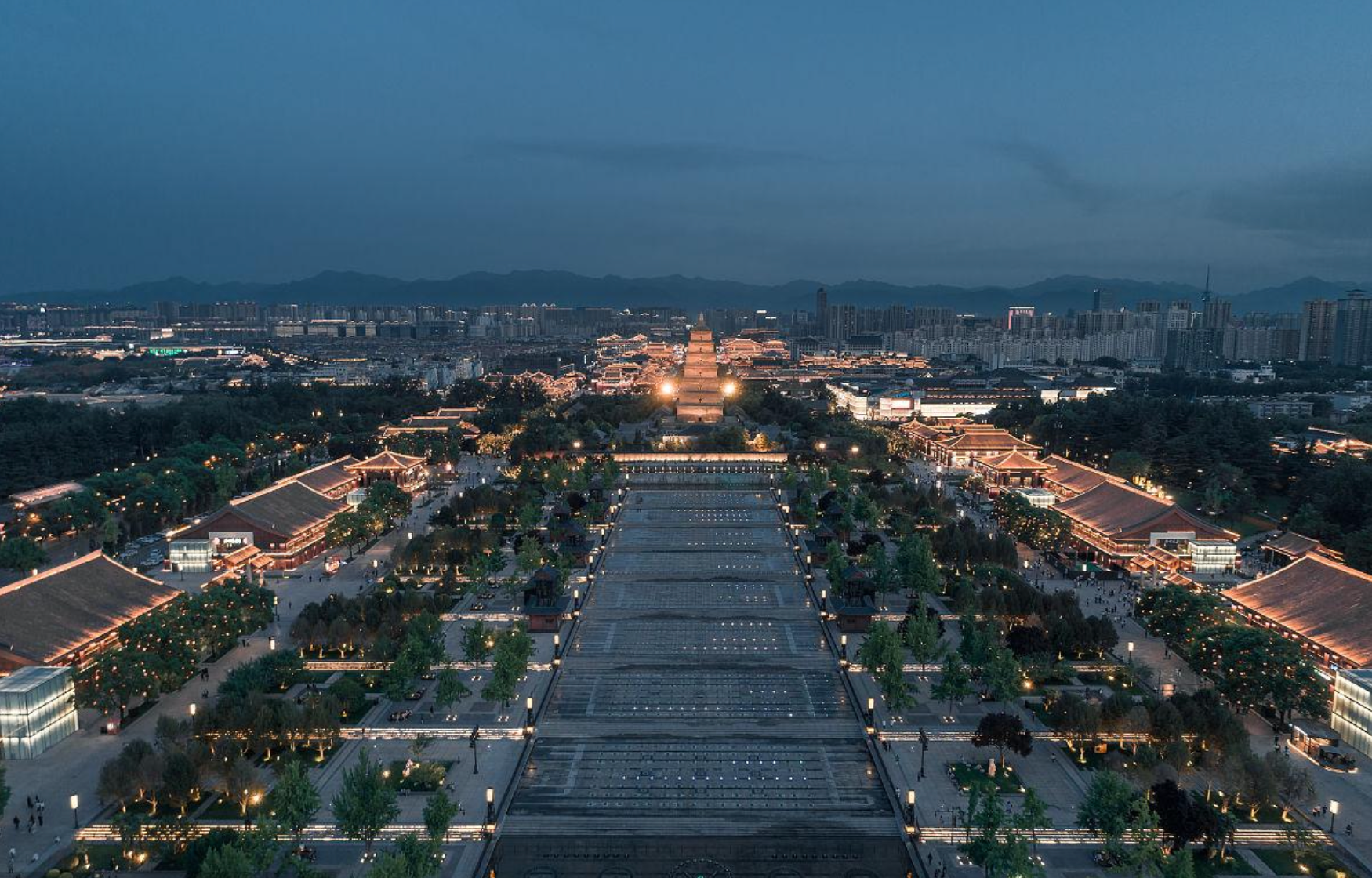
Figure 3: The structure of Dayan Pagoda Square.
The north wall of the Dayan Pagoda Square concentrates on the relief area, featuring the "Great Tang Dynasty" as its theme [14]. The 106-meter relief characterized the prosperity of the Great Tang Dynasty, which not only promote the ancient culture, but also functions as a divider of the square. The delicate relief adequately demonstrates the graceful and elegant Tang culture and integrates it into its ground design, enhancing the cultural connotation of the plaza ground landscape.

Figure 4: Relief in Dayan Pagoda Square.
In terms of the landscape design of the Dayan Pagoda Square, Xi'an has indeed taken full advantage of its rich historical resources.
4.3. Innovative framework of tourism -- Datang Everbright City & Shanxi Museum
As a Wanghong (meaning highly-valued on the Internet) city in China, Xi’an has established a triadic theoretical framework of tourists–media–cities (ToMeCi) to publicize its unique characteristics [15]. In contemporary society, media representations of destinations play a significant role in the attractiveness of tourism.
A prime example of leveraging social media's influence is Datang Everbright City. When typing this spot on a platform like Tiktok, the prosperous Tang Dynasty, remodeled by modern technology, will be presented to every netizen. The fantastic visual attraction on the screen is one of the strongest driving forces that has made Xi’an an acknowledged city in Wanghong. In terms of novel promotion, the most popular case would be the tumbler performance in Datang Everbright City. The performance in 2019 earned more than 230 million views on TikTok, attracting many travelers to Xi’an to see the actress perform [15]. Following the trend online, more tourists decide to visit Xi’an, “clock in” at some famous spots, and post images of their trip to social media. Thus, escalating tourists will be attracted to Xi’an. It’s obvious that social media led Xi’an’s tourism to a virtuous circle.
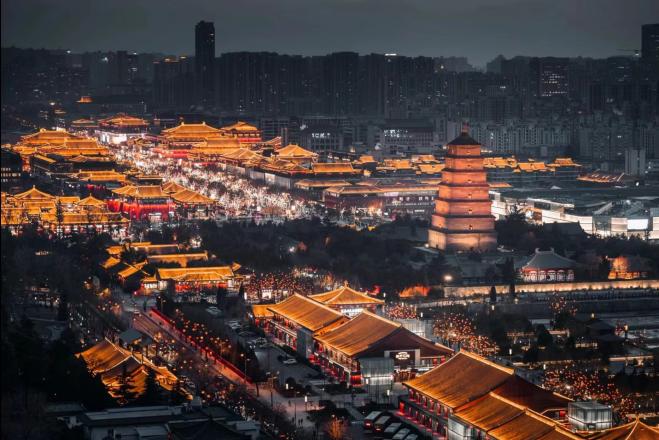
Figure 5: The night scene of Datang Everbright City.
Apart from traditional travel, the Shanxi History Museum in Xi’an also holds digital exhibitions on its website, allowing people to enjoy cultural relics without leaving home. The digital exhibition is in the form of exploration with interactive game sessions during the visit. With advanced technology like VR, the digital artifacts on display are very real and vivid, and there is no difference from what is seen by human eyes. When visiting the online museum, tourists can gain deeper insights into those cultural relics, which in turn increases their interest in enjoying it in person.
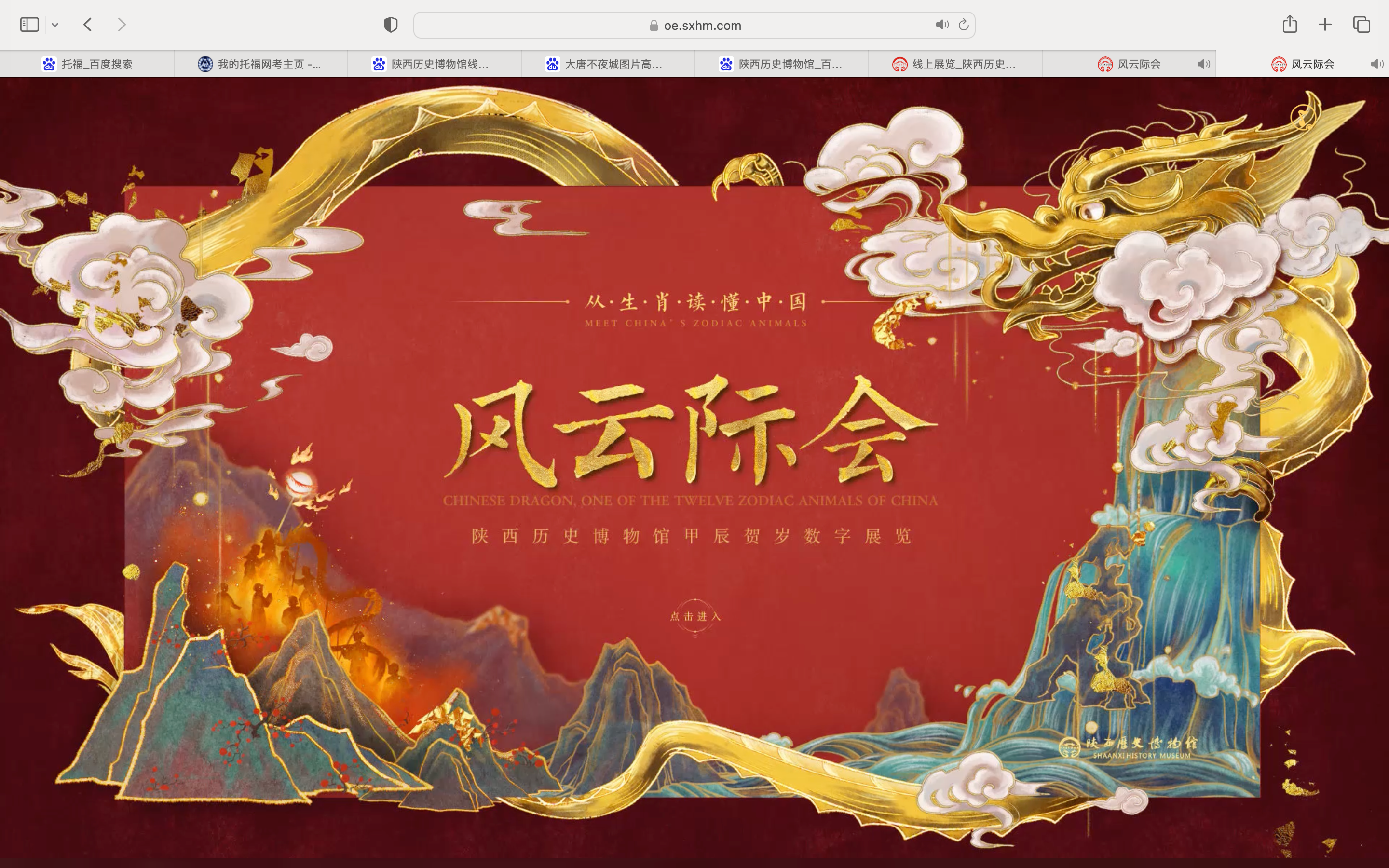
Figure 6: A digital exhibition on the Shanxi History Museum Website.
5. Case analysis -- Yangzhou
5.1. Basic information about tourism in Yangzhou
Yangzhou, located in Jiangsu Province, is a town that is celebrated for its significant focus on tourism. With a history stretching back over 2,500 years, Yangzhou is not only steeped in rich cultural heritage but also distinguished as the "Capital of East Asian Culture."
As a traditional tourism characteristic town, Yangzhou boasts a wealth of travel resources. The city's mild climate fosters lush and diverse vegetation, which is particularly vibrant during the spring and summer months. Culturally, Yangzhou is a treasure trove of artistic expression. As the Yangzhou Municipal Government noted in 2024, the city proudly hosts over 20 arts recognized as part of the national intangible heritage list, including the Yangzhou Opera, exquisite lacquerware, and delicate jade sculpture.
Tourism remains a cornerstone of Yangzhou’s economy. In 2023, the city welcomed approximately 103.212 million domestic and international tourists, generating a staggering 100 billion RMB in its tourism revenue [16].
5.2. Strengths of targeting and innovation -- Grand Canal Museum & Pishi Street
Like other traditional characteristics towns, Yangzhou's main visitors are families and young generations. Recognizing this trend, Yangzhou has implemented innovative strategies to effectively cater to these demographics.
The Grand Canal Museum in Yangzhou is particularly well-suited for parents with children who prefer educational experiences. The museum showcases the comprehensive history of the Grand Canal’s transformation, allowing children to understand this canal more deeply. To enhance the learning experience, the museum is equipped with ample interpretative tools and dedicated volunteers who assist visitors in understanding the exhibits more thoroughly.
Another significant motivator for family travel is the desire to escape the routine of daily life for relaxation and rejuvenation. To align with this need while adding an element of fun, the museum has introduced multiple virtual reality setups that present vivid views of the ancient Grand Canal. The unique immersive role-playing experience, "Labyrinth Escape of the Canal," has also become a popular attraction, drawing numerous children and young adults.
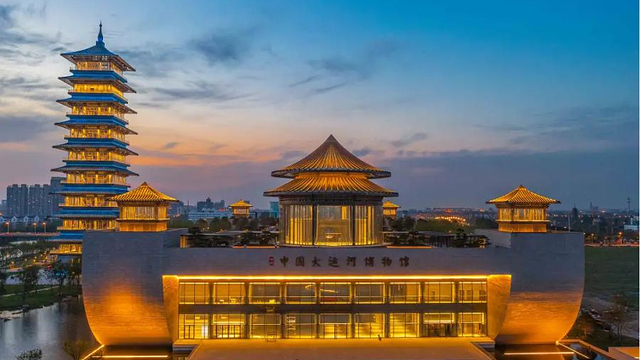
Figure 7: The Grand Canal Museum.

Figure 8: Roles in "Labyrinth Escape of the Canal".
Pishi Street in Yangzhou is always filled with young people, likely due to the specialty stores that line the street. These stores are thoughtfully decorated in styles that resonate with the preferences of the younger demographic, making it a popular spot for them to "clock in" and experience.
Additionally, the street is home to numerous souvenir shops that carry a range of novel items tailored to the tastes of young consumers.
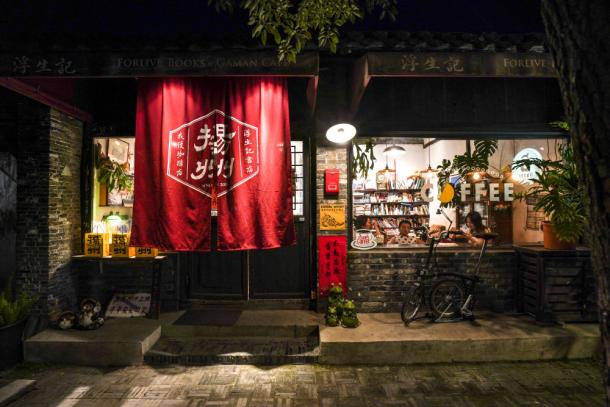
Figure 9: A “coffee & book” shop on Pishi Street.

Figure 10: Lacquered fan making in Yangzhou.
5.3. Weaknesses of homogenization and design -- Dongguan Street & Xie Fuchun
As an ancient characteristic town, Yangzhou is inevitable to construct antique streets. Dongguan Street is one of the most typical ones. However, this street is currently facing significant challenges related to homogeneity. The goods available on Dongguan Street largely lack Yangzhou's unique characteristics and are similar to items that can be found on antique streets in other cities. Tourists have noted that even the snacks and drinks, such as yogurt and tofu, are indistinguishable from those offered in other historic towns.
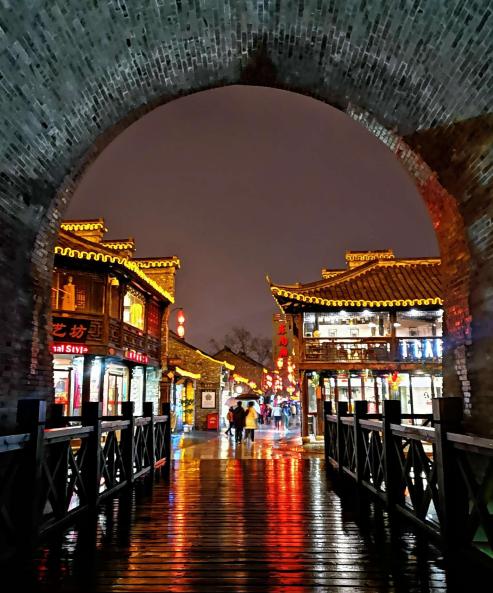
Figure 11: The appearance of Dongguan Street.
In addition, Yangzhou suffers from a scarcity of prominent local brands. Xie Fuchun, established in the 1830s, is one of the few well-known brands from Yangzhou, serving as China's first cosmetic enterprise. Despite its rich history, the brand has struggled in recent years. Most of the time, there are hardly any customers in the store because many potential customers are unaware of the superior qualities of Xie Fuchun’s makeup products. Furthermore, the brand's sketchy packaging and store decoration may fail to attract tourists' interest or encourage purchases. This situation highlights a missed opportunity for Yangzhou to capitalize on its heritage brands.

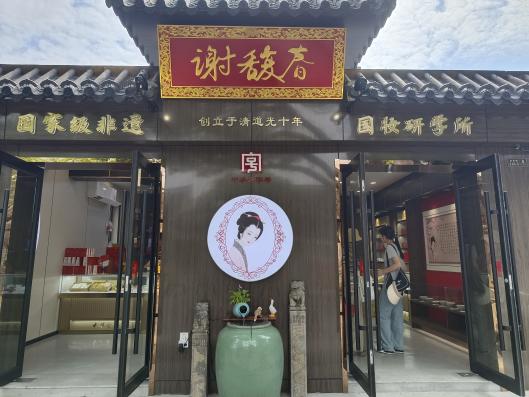
Figure 12: The product and store outlook of Xie Fuchun.
5.4. Impact of character town construction on Yangzhou residents -- Survey analysis
There were 100 valid responses collected in total. The diagram below displays the total number of each score as well as the average scores:
Table 1: The number of each score.
1 | 2 | 3 | 4 | 5 | Regional characteristics | 6 | 1 | 4 | 14 | 75 | Tourist attractions | 5 | 1 | 7 | 15 | 72 | Environment & Living conditions | 6 | 3 | 3 | 13 | 75 | Transportation facilities | 3 | 16 | 24 | 19 | 38 | Historical & Cultural exploration | 4 | 5 | 18 | 20 | 53 | Influence on locals’ daily lives | 6 | 12 | 22 | 18 | 42 | Consumer needs | 5 | 5 | 25 | 23 | 42 | Confidence in hometown | 4 | 5 | 5 | 12 | 74 | Employment situation | 6 | 6 | 14 | 24 | 50 | Overall development of tourism | 4 | 3 | 21 | 26 | 46 |
Table 2: Average scores of the satisfaction situation.
Average scores | Regional characteristics | 4.51 | Tourist attractions | 4.48 | Environment & Living conditions | 4.48 | Transportation facilities | 3.73 | Historical & Cultural exploration | 4.13 | Influence on locals’ daily lives | 3.78 | Consumer needs | 3.92 | Confidence in hometown | 4.47 | < 3.90 | Relatively unsatisfied | Employment situation | 4.06 | 3.90 - 4.45 | Moderate | Overall development of tourism | 4.07 | > 4.45 | Satisfied |
Excluding residents' inherent affection for their hometown, the average scores can be divided into three levels to measure their satisfaction with Yangzhou's tourism aspects. A score above 4.45 indicates that residents are satisfied with this facet of Yangzhou’s tourism. Conversely, a score below 3.90 suggests dissatisfaction. Scores that fall between these two extremes represent a moderate level of satisfaction.
Satisfied level (Average score > 4.45) :
Elements contributing to this high level are primarily related to Yangzhou's natural and cultural heritage, including the local environment, regional characteristics, and tourist attractions. This demonstrates that Yangzhou possesses the essential qualities expected of an ancient town. Consequently, residents exhibit strong confidence in its travel resources.
Moderate (Average score in 3.90-4.45) :
This category highlights the aspects related to Yangzhou’s tourism industry's operation, suggesting ample space for enhancement. Specifically, Yangzhou might not have fully leveraged its local tourism potential or implemented innovative strategies to attract targeted customers effectively. Moreover, the tourism sector's contribution to local employment could be further optimized. Enhancing these areas could significantly increase the benefits tourism brings to the city.
Unsatisfied level (Average score < 3.90) :
The relatively lowest scores in this category reveal significant resident dissatisfaction, primarily due to the adverse impacts on their daily lives. During peak travel seasons, locals often experience inconvenience. Roads near popular attractions frequently become congested, reflecting that the existing transportation infrastructure is inadequate for handling the demands of tourism growth. Such issues disrupt the daily pace of life for Yangzhou residents, highlighting critical areas needing attention and improvement.
Although the sample size was adequate for statistical analysis, there are still limitations. The survey may only partially represent some demographic groups living in Yangzhou, which can affect the generalizability of the findings.
6. Conclusion and Recommendation
The exploration of characteristic towns, particularly through the cases of Yangzhou and Xi'an, demonstrates the critical role these towns play in leveraging their unique cultural and historical assets to boost tourism and local economies. This essay illustrated how such towns exhibit their inherent heritage and adapt it to modern demands. To achieve this, characteristic towns such as Yangzhou should consider the following:
1) Thoroughly learn and tap into local resources:
A characteristic town that effectively understands and exploits its unique local resources, both culturally and naturally, can brand itself more distinctively (Quinn, 2013). This makes marketing campaigns more compelling and can help the town stand out in a crowded tourism market. A robust local flavor can be a powerful tool in promotional strategies, attracting those looking for unique vacation destinations.
2) Implement innovative strategies:
In the conventional commercial framework, characteristic towns should constantly monitor evolving consumer preferences and update and refine their offerings promptly. Additionally, they can innovate their operational models, such as introducing stamp-collecting activities, to enhance the interactivity of local tourism experiences. Such strategic innovations are crucial for boosting their competitive edge in the market.
3) Drive tourism with intangible cultural heritage:
Characteristic towns, especially those with a long history, can use their intangible cultural heritage to drive tourism. On the one hand, they can spend more time on product research and development to produce goods of higher quality that are in line with mainstream preferences. On the other hand, these towns are likely to see improved performance by actively encouraging visitors to create and preserve intangible cultural heritage. Such innovative engagement strategies are poised to attract greater attention and interest.
4) Utilize the strength of social media:
Characteristic towns focusing on tourism can develop a professional, visually appealing social media presence that highlights the town's uniqueness and beauty. For instance, it’s recommended to use high-quality images, videos, and engaging stories to showcase the town's attractions, cultural events, and local experiences. Platforms like TikTok, Instagram, and Facebook are especially useful for visual storytelling.
References
[1]. Zhejiang Goverment. (2019, August 5). Characteristic towns. http://www.ezhejiang.gov.cn/2019-08/05/c_420320.htm
[2]. Zou, Y., & Zhao, W. (2018). Searching for a new dynamic of industrialization and urbanization: anatomy of China’s characteristic town program. Urban Geography, 39(7), 1060–1069. https://doi.org/10.1080/02723638.2018.1433926
[3]. Yuan, Z. Z., & Li, H. S. (2022). Practice interpretation and sustainable development path analysis of characteristic town construction in Jiangsu province. Hubei Agricultural Science, 61(2), 136.
[4]. Gainza, Xabier. (2017). Culture-led neighborhood transformations beyond the revitalization/gentrification dichotomy. Urban Studies, 54(4), 953–970.
[5]. Tao, R., Wei, X., Shao, F., Li, H., He, D., Zhang, S., Li, W., Yang, Q., & Lu, J. (Eds.). (2017). (rep.). New Urbanisation 4.0, Nurturing Character & Achieving Townships. Cushman & Wakefield.
[6]. Eurostat. 2018. Guide to Eurostat Culture Statistics. Luxembourg: Publications Office of the European Union. https://op.europa.eu/s/n2Q6
[7]. Hu, X., Lin, T., Zhang, T., & Zhang, X. (2024). Theoretical Elaboration and Policy Typologies of Specialty Towns: Evidence from Zhejiang, China. Tropical Gepgraphy, 44(2), 269–279. https://doi.org/10.13284/j.cnki.rddl.003830
[8]. Wang, Q., & Liu, S. (2021). Research on the development path of domestic tourism characteristic towns from the perspective of integration of culture and tourism. Open Journal of Social Sciences, 9(1), 234-242.
[9]. Cultural and Tourism Industry Index Laboratory. (2022). (rep.). 2022 Intangible Cultural Heritage Consumption Innovation Report. Alibaba.
[10]. Zong, C. Y. (2018). Innovative application of digital animation technology in intangible cultural heritage protection. Art Panor, 12, 116-117.
[11]. Dang, Q., Luo, Z., Ouyang, C., Wang, L., & Xie, M. (2021). Intangible cultural heritage in China: a visual analysis of research hotspots, frontiers, and trends using citeSpace. Sustainability, 13(17), 9865.
[12]. Xi ’an Bureau of Statistic. (2024). (rep.). Xi ’an 2023 National economic and social development Statistical Bulletin. Xi’an Release. Retrieved June 1, 2024, from https://mp.weixin.qq.com/s/1DSKSILDNplrcIGgPWaSBg.
[13]. Wang, R. & Li, Y. (2023). The Expression of Tang Culture in Xi’an Urban Landscape Design —Taking the Design of Xi’an Dayan Pagoda Scenic Area as an Example. Design, 8 (2), 485-494.
[14]. Li, G. N. (2012). A Study on the Big Wild Goose Pagoda from the perspective of Public Space (Doctoral dissertation).
[15]. Fan, T., & Lin, Z. (2022). Toward tourists–media–cities tourism: Xi’an as a Wanghong City. Sustainability, 14(19), 11806. https://doi.org/10.3390/su141911806
[16]. Yangzhou Municipal Government. (2024, March 21). 2023 Yangzhou National economic and social Development Statistical Bulletin. Yangzhou Gov. http://www.yangzhou.gov.cn/
Cite this article
Zhang,Q. (2024). The Development of Characteristic Towns in China - Take Yangzhou as an Example. Advances in Economics, Management and Political Sciences,120,166-178.
Data availability
The datasets used and/or analyzed during the current study will be available from the authors upon reasonable request.
Disclaimer/Publisher's Note
The statements, opinions and data contained in all publications are solely those of the individual author(s) and contributor(s) and not of EWA Publishing and/or the editor(s). EWA Publishing and/or the editor(s) disclaim responsibility for any injury to people or property resulting from any ideas, methods, instructions or products referred to in the content.
About volume
Volume title: Proceedings of the 8th International Conference on Economic Management and Green Development
© 2024 by the author(s). Licensee EWA Publishing, Oxford, UK. This article is an open access article distributed under the terms and
conditions of the Creative Commons Attribution (CC BY) license. Authors who
publish this series agree to the following terms:
1. Authors retain copyright and grant the series right of first publication with the work simultaneously licensed under a Creative Commons
Attribution License that allows others to share the work with an acknowledgment of the work's authorship and initial publication in this
series.
2. Authors are able to enter into separate, additional contractual arrangements for the non-exclusive distribution of the series's published
version of the work (e.g., post it to an institutional repository or publish it in a book), with an acknowledgment of its initial
publication in this series.
3. Authors are permitted and encouraged to post their work online (e.g., in institutional repositories or on their website) prior to and
during the submission process, as it can lead to productive exchanges, as well as earlier and greater citation of published work (See
Open access policy for details).
References
[1]. Zhejiang Goverment. (2019, August 5). Characteristic towns. http://www.ezhejiang.gov.cn/2019-08/05/c_420320.htm
[2]. Zou, Y., & Zhao, W. (2018). Searching for a new dynamic of industrialization and urbanization: anatomy of China’s characteristic town program. Urban Geography, 39(7), 1060–1069. https://doi.org/10.1080/02723638.2018.1433926
[3]. Yuan, Z. Z., & Li, H. S. (2022). Practice interpretation and sustainable development path analysis of characteristic town construction in Jiangsu province. Hubei Agricultural Science, 61(2), 136.
[4]. Gainza, Xabier. (2017). Culture-led neighborhood transformations beyond the revitalization/gentrification dichotomy. Urban Studies, 54(4), 953–970.
[5]. Tao, R., Wei, X., Shao, F., Li, H., He, D., Zhang, S., Li, W., Yang, Q., & Lu, J. (Eds.). (2017). (rep.). New Urbanisation 4.0, Nurturing Character & Achieving Townships. Cushman & Wakefield.
[6]. Eurostat. 2018. Guide to Eurostat Culture Statistics. Luxembourg: Publications Office of the European Union. https://op.europa.eu/s/n2Q6
[7]. Hu, X., Lin, T., Zhang, T., & Zhang, X. (2024). Theoretical Elaboration and Policy Typologies of Specialty Towns: Evidence from Zhejiang, China. Tropical Gepgraphy, 44(2), 269–279. https://doi.org/10.13284/j.cnki.rddl.003830
[8]. Wang, Q., & Liu, S. (2021). Research on the development path of domestic tourism characteristic towns from the perspective of integration of culture and tourism. Open Journal of Social Sciences, 9(1), 234-242.
[9]. Cultural and Tourism Industry Index Laboratory. (2022). (rep.). 2022 Intangible Cultural Heritage Consumption Innovation Report. Alibaba.
[10]. Zong, C. Y. (2018). Innovative application of digital animation technology in intangible cultural heritage protection. Art Panor, 12, 116-117.
[11]. Dang, Q., Luo, Z., Ouyang, C., Wang, L., & Xie, M. (2021). Intangible cultural heritage in China: a visual analysis of research hotspots, frontiers, and trends using citeSpace. Sustainability, 13(17), 9865.
[12]. Xi ’an Bureau of Statistic. (2024). (rep.). Xi ’an 2023 National economic and social development Statistical Bulletin. Xi’an Release. Retrieved June 1, 2024, from https://mp.weixin.qq.com/s/1DSKSILDNplrcIGgPWaSBg.
[13]. Wang, R. & Li, Y. (2023). The Expression of Tang Culture in Xi’an Urban Landscape Design —Taking the Design of Xi’an Dayan Pagoda Scenic Area as an Example. Design, 8 (2), 485-494.
[14]. Li, G. N. (2012). A Study on the Big Wild Goose Pagoda from the perspective of Public Space (Doctoral dissertation).
[15]. Fan, T., & Lin, Z. (2022). Toward tourists–media–cities tourism: Xi’an as a Wanghong City. Sustainability, 14(19), 11806. https://doi.org/10.3390/su141911806
[16]. Yangzhou Municipal Government. (2024, March 21). 2023 Yangzhou National economic and social Development Statistical Bulletin. Yangzhou Gov. http://www.yangzhou.gov.cn/





